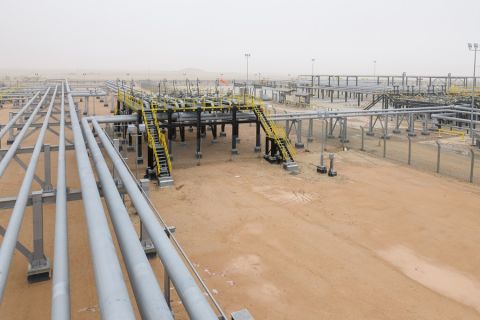The United States overtook Saudi Arabia as India’s second biggest oil supplier after Iraq last month, as refiners boosted cheaper U.S. crude purchases to record levels to offset OPEC+ supply cuts, data from trade sources showed on Match 15.
The switch in supplies, triggered by lower U.S. crude demand, coincided with Saudi Arabia's voluntary extra 1 million barrel per day (MMbbl/d) output cut, on top of an agreement by OPEC+ to maintain lower production.
India's imports from the United States—the world's top producer—rose 48% to a record 545,300 bbl/d in February from the prior month, accounting for 14% of India's overall imports last month, the data obtained by Reuters showed.
In contrast, February imports from Saudi Arabia fell by 42% from January to a decade low of 445,200 bbl/d, the data showed. Saudi Arabia, which has consistently been one of India's top two suppliers, slipped to No. 4 for the first time since at least January 2006.
India's oil import data by country from before 2006 is not available to Reuters.
“U.S. demand was weak and refineries were running at low rates so the U.S. crude had to go somewhere, and Asia is the region which has seen rapid demand recovery,” said Refinitiv analyst Ehsan Ul Haq.
“China has not been taking U.S. oil because of (the) trade problem, so India is the obvious choice,” he said.
Iraq continued to be the top oil seller to India despite a 23% drop in purchases to a five-month low of 867,500 bbl/d, the data showed.
The UAE slipped to fifth position from third in January, while Nigeria rose to third from fifth, exporting 472,300 bbl/d, the most since Oct 2019.
India shipped in 3.92 MMbbl/d of oil in February, a decline of 18% from January, the data showed.
Haq said India may have taken smaller volumes in February because, similarly to others in the market, it assumed that OPEC+ might ease production cuts, potentially leading to lower prices.
India has repeatedly called on OPEC+ to ease supply curbs and has blamed Saudi's voluntary cuts for contributing to a spike in global oil prices.
The country is the world's third biggest oil importer and consumer, shipping in about 84% of its crude needs, and relies heavily on the Middle East.
Its government has asked refiners to speed up diversification of crude sources after Saudi Arabia's oil minister, in response to India's calls for producers to ease output cuts, told the country to dip into reserves filled with cheaper oil bought last year.
The Middle East's share of India's overall imports plunged to a 22-month low of about 52.7%, while Africa's rose to 15%, the highest since September.
“(The) widening differential between WTI and Brent during December and January, and relatively subdued freight rates, offered India an opportunity to buy U.S. oil to make up for lower Middle Eastern suppliers,” Haq said.
Low supplies from the Middle East dragged OPEC nations’ share of India's oil imports to a record low in the April to February period.
Recommended Reading
Shipping Industry Urges UN to Protect Vessels After Iran Seizure
2024-04-19 - Merchant ships and seafarers are increasingly in peril at sea as attacks escalate in the Middle East.
Paisie: Crude Prices Rising Faster Than Expected
2024-04-19 - Supply cuts by OPEC+, tensions in Ukraine and Gaza drive the increases.
Report: Freeport LNG Hits Sixth Day of Dwindling Gas Consumption
2024-04-17 - With Freeport LNG operating at a fraction of its full capacity, natural gas futures have fallen following a short rally the week before.
Permian NatGas Hits 15-month Low as Negative Prices Linger
2024-04-16 - Prices at the Waha Hub in West Texas closed at negative $2.99/MMBtu on April 15, its lowest since December 2022.
BP Starts Oil Production at New Offshore Platform in Azerbaijan
2024-04-16 - Azeri Central East offshore platform is the seventh oil platform installed in the Azeri-Chirag-Gunashli field in the Caspian Sea.


